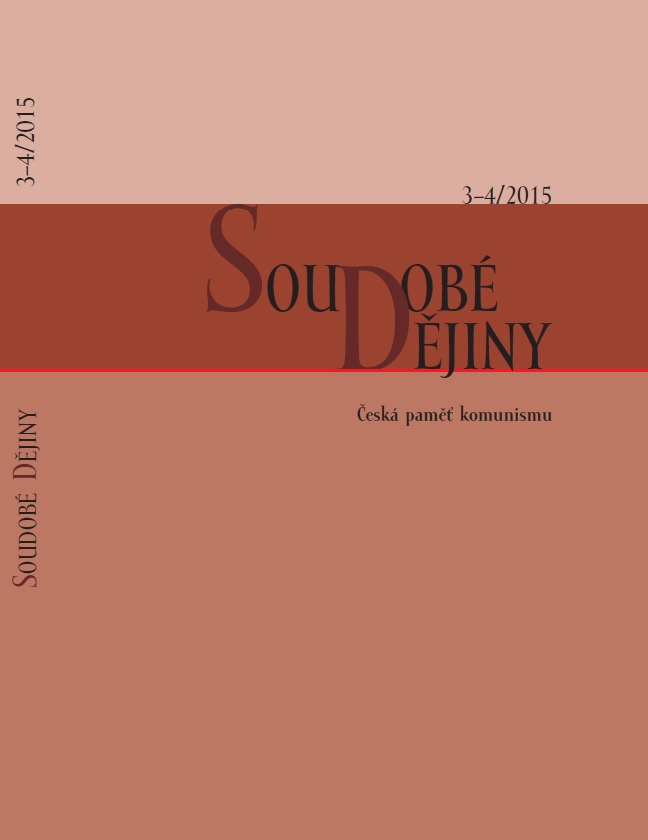
Pamětní místa na komunismus v České republice
The author recapitulates the documentary results of the grant-funded project ‘Stories of Places: A Topography of the Memory of the Nation’, carried out at the Institute of Contemporary History, Prague, and he outlines their interpretation with regard to memory studies as a discipline of historical research in its own right. The project entailed research on commemorative events, their actors and victims, from the period of the Communist régime, from 1948 to 1989, in what is today the Czech Republic. This project was inspired by the large German project ‘Places of Memory of the Communist Dictatorships’ (Erinnerungsorte an die kommunistischen Diktaturen) organized by the Federal Foundation for the Reappraisal of the SED Dictatorship (Bundesstiftung zur Aufarbeitung der SED-Diktatur). As part of the project, places that have been considered sites of memory are defi ned as those that have been created with the aim of public commemoration, most often as artistic installations with a historical message (such as commemorative plaques, sculptures, monuments, crosses, and inscriptions), and also places that use historical artefacts as a means of education (such as museums and education paths or heritage trails). The places of memory that have been identifi ed and documented are presented to the public in two ways: by means of a regularly updated database called ‘Places of Memory of the Communist Dictatorship’ (Pamětní místa na komunistický režim; at, so far only in Czech, www.pametnimista.usd.cas.cz), and by means of a specially designed map called ‘Shifts in Memory: A Topography of the Contemporary Memory of the Nation and Refl ections on It’ (Posuny paměti: Topografi e soudobé paměti národa a její refl exe’; for the texts, so far only in Czech, see www.usd.cas. cz/wp-content/uploads/2013/06/mapa_Posuny_pameti_data.pdf; for the illustrations, see www.usd.cas.cz/wp-content/uploads/2013/06/mapa_Posuny_pameti. pdf). This web database comprises more than 600 places of memory, organized from three different perspectives – according to region, theme, and time –, which are discussed in some detail in the article. The author, with some scepticism, comments on the current boom in concepts and publications about historical memory in the Czech social sciences, and he states that it is not the ambition of this project to include itself in this intensive discourse. None the less, the documentation that has been collected may well be a natural source of contemplating collective memory related to the Communist period of Czech history. From the database it follows that the vast majority of the preserved places of memory have come into being after the Changes beginning in mid-November 1989, and that, in comparison with other periods, what they commemorate is mostly the Communist repression of the 1950s and its victims. In the Czech Republic, however, there are practically no particular regions of the memory of Communism; the means of recalling the Communist past in the individual regions is highly similar from one place to the next, though the actual themes of the places of memory are different. A distinct feature of these places of memory is their spontaneous emergence, usually at a local initiative, and their unusualness in their efforts to achieve the political shaping of the memory of Communism ‘from above’. The author then considers in detail how the Prague Spring of 1968 has been reflected in places of memory.
More...








